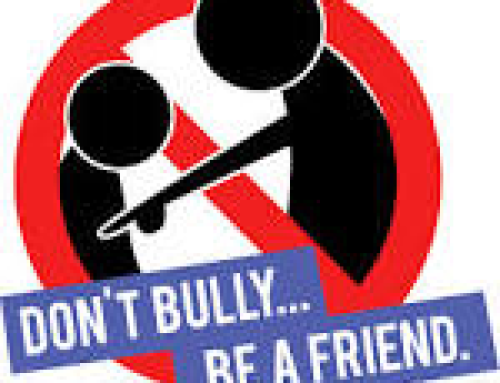By: Alexa Rabin, Psy.D.
Why do children bite their nails?
 Children bite their nails for a variety of reasons. One common reason associated with nail biting is emotional stress. Children may experience feelings of anxiety, pressure, or nervousness associated with certain aspects of growing up, and they learn to use nail biting as a coping strategy. Nail biting may also be associated with boredom, frustration, or impatience. Some research suggests that individuals who have perfectionistic tendencies are more prone to feelings of frustration, impatience, and dissatisfaction when they do not reach their goals. Such individuals might develop body-focused repetitive habits such as nail biting, fidgeting, and hair twirling as a mechanism to soothe such feelings of frustration, impatience, or boredom. Some children begin to bite their nails because they are imitating or modeling after a parent or other figure. Children learn by watching and listening, processing information, attempting to copy a behavior, and practicing a behavior. They are more likely to repeat behaviors they witness often, so if a parent is an avid nail biter, some experts believe children may watch, model, and practice the habit as well.
Children bite their nails for a variety of reasons. One common reason associated with nail biting is emotional stress. Children may experience feelings of anxiety, pressure, or nervousness associated with certain aspects of growing up, and they learn to use nail biting as a coping strategy. Nail biting may also be associated with boredom, frustration, or impatience. Some research suggests that individuals who have perfectionistic tendencies are more prone to feelings of frustration, impatience, and dissatisfaction when they do not reach their goals. Such individuals might develop body-focused repetitive habits such as nail biting, fidgeting, and hair twirling as a mechanism to soothe such feelings of frustration, impatience, or boredom. Some children begin to bite their nails because they are imitating or modeling after a parent or other figure. Children learn by watching and listening, processing information, attempting to copy a behavior, and practicing a behavior. They are more likely to repeat behaviors they witness often, so if a parent is an avid nail biter, some experts believe children may watch, model, and practice the habit as well.
What to do about nail biting behavior?
If a parent were to contact me regarding their child’s nail biting habit, I would start with the following questions regarding the behavior:
- How long have you noticed this behavior occurring?
- How severe is it? For example, are your child’s nails painful? Bleeding?
- How frequently are you noticing the behavior?
- Is there anything that you believe might be triggering the behavior?
- Has your child exhibited any other repetitive behaviors?
These initial questions help me get a sense of how concerning the behavior is and what type of intervention will be necessary. For example, if a child’s fingers are in pain and bleeding, the behavior is more severe, and I would want to ensure the parents have also consulted with their pediatrician. If the behavior started drastically and escalated quickly, I would also be more concerned and would want to identify what has changed in the child’s life to trigger this type of behavioral response. In these more severe situations, we need to work more closely to help the child become aware of the behavior, the triggers to the behavior, and alternative coping strategies or behaviors to engage in as a replacement for the nail biting. If the behavior is exhibited infrequently and there is no injury associated with the nail biting, then I may suggest that parents start slowly with educating the child about nail biting and gently remind the child if/when he or she is exhibiting the behavior to help build awareness. In some cases, I may advise parents ignore the behavior and focus on positive behaviors, as it appears infrequent nail biting can likely resolve on its own. The age of the child and the developmental level of the child are also important factors that would help inform what interventions would be most appropriate.
What are some techniques to help get rid of the habit?
The first step to changing a negative pattern is to understand the behavior and what is driving or triggering it. Once we identify what is driving the behavior, then we can work to address the underlying issues associated with it. For example, if anxiety is causing the child to bite his or her nails, then we can educate the child about anxiety and help them implement healthy alternative coping strategies to replace the nail biting behavior. If you can identify that the nail biting is associated with nervousness around changing schools, then I would suggest parents focus more on talking to their child about the feelings associated with the change rather than focusing on the nail biting. In such a situation, it seems if the child can resolve his or her emotions in a healthy manner, the nail biting will likely resolve on its own.
While there are some general tips and techniques to help address nail biting, keep in mind these tips may or may not be appropriate based on your child’s age, developmental level, or the severity of their behavior. If you are unsure of how to proceed, I recommend consulting with your pediatrician or a child psychologist to help you come up with specific strategies for your child.
Generally speaking, some techniques that are useful in addressing nail biting behavior include education and awareness training. It is important to help your child understand what nervous habits are and how habits can be broken. The child also needs to be motivated to change a habit, so the first step is helping the child recognize this is a habit that they want to work on, rather than a habit you are forcing them to work on. It is important that these discussions do not feel punitive, shameful, or punishing for children. They are unlikely to feel motivated to change a behavior or to talk to you about things if they worry they will get in trouble for it.
Help your child become more aware of when he or she is biting nails, but listen to your child if your reminders become irritating or overbearing. You may come up with a code word or a tap so your reminders don’t feel like nagging. You want to ensure you don’t escalate the problem by overwhelming or nagging them to the point that other negative emotions such as shame, frustration, embarrassment, anger, etc. are associated with nail biting as well.
You can also help your child brainstorm appropriate replacement behaviors and practice these behaviors. Remind them that they need to practice something before it feels like “it is working.” They can carry a stone or a small fidget (a small ball, squooshy toy, or other item) in their pocket and teach them to rub it, squoosh it, or hold it instead of biting their nails. Some kids benefit from learning and implementing relaxation techniques, such as deep breathing, to help them feel more calm and comfortable. Some children who have more of an oral fixation respond well to replacing nail biting with taking sips of water, juice, or another healthy alternative. Be careful not to replace nail biting with other potentially unhealthy habits such as excessive snacking or drinking sugary beverages.
You can also ask your child what might help them feel less inclined to engage in the behavior. Allow your child to be part of the discussion and the decision-making. Some children are less likely to bite their nails if their nails are kept short or manicured. Some are less likely to bite their nails if they get extra time to play outside and burn off extra tension or nervous energy. Some kids respond well to engaging in projects or learning to do something else with their hands such as sign language, creating music, making art, etc.
Keep in mind that there is no one formula and there is no specific time it will or should take to break a habit. Nail biting is typically a habit that is difficult to break, so stay patient. Try different techniques and remind yourself and your child that it takes time to break old habits and even more time to learn new ones. It is also important to remind your child that you love them unconditionally. Be sure to remain loving and affectionate towards them regardless of how successful they are in breaking this habit (or others).





Leave A Comment